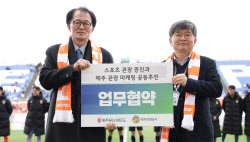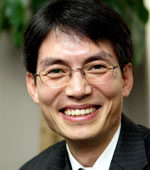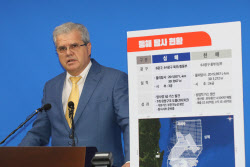2024년 06월 07일 금요일
Korea’s Approach to Corporate Restructuring
It is now a consensus view that the main cause of the Korean financial crisis of 1997 was a lack of market discipline and the malfunctioning of the market system rather than macroeconomic imbalances. Thus, the Korean government’s role in establishing a well-functioning market system is imperative, not only for a quick turnaround of the Korean economy but also for convincing, sustainable growth.
Once such a system is solidly put into place, the government can then take a backseat and let market forces prevail. Its role at this mature stage should be limited to that of surveillance and ensuring that market discipline is upheld without any exceptions. In the initial stages of restructuring, however, prompt, speedy restructuring becomes a distant reality in the absence of government’s active role. Korea’s corporate restructuring has been proceeding exactly along this path.
It is true that the rapid recovery of the past two years, which earned Korea praise from the international community, has led to a false sense of complacency. Political support for many tough initial reform measures has weakened. However, Korea has not yet lost its flexibility, its ability to learn quickly and its readiness to implement reforms.
In fact, the government has become more serious about structural reforms in the financial, corporate and public sectors, especially since August. It has provided a new impetus to reform efforts, witnessed, for example, by putting Daewoo Motor into court receivership, accelerating the privatization process of public enterprises such as Korea Electric Power Corp. and by consolidating the commercial banking system through financial holding companies as well as mergers.
While the concerns of foreign investors are understandable, I would like to clarify that Korea’s corporate restructuring is fundamentally different from the past attempts to improve the business sector, particularly with regard to the chaebols. The lessons of Daewoo group suggest that no chaebol is too big to fail. This principle was confirmed again when creditor banks firmly refused new loan requests from the construction firms Woobang and Dong-Ah.
Recognizing an investor concern that Korea is reluctant to cut loose its “zombie” companies, creditor banks have recently disclosed a list of 52 non-viable companies that need to be placed under court receivership or liquidation programs. This is an important achievement toward establishing a market system in which market forces monitor the viability of companies and weed out non-viable companies in an efficient manner.
If the government in the past directly intervened in the fate of the companies, it is now empowering financial institutions to take on the role of monitoring the financial health of their borrowers and taking appropriate measures to ensure their soundness. This can further be facilitated by the presence of a continuous exit system, in which non-viable companies are removed from the market in an expeditious manner.
For example, as of the end of 1999 the Korean government has made financial institutions adopt a more rigorous asset-classification standard called “Forward Looking Criteria.” With the FLC system in place, Korean banks now have a clear concept of loss-cut and are actually taking actions since their potential losses are already reflected in their books. Sufficient accumulation of the loss provisioning induces lenders to be more aggressive in taking actions toward non-viable borrowers.
The deregulation of mergers and acquisitions is another example. Hostile M&A have already been legalized. Even leveraged buy-out schemes will be allowed from this year. M&A procedures will be further streamlined, in line with international norms.
I cannot leave out the importance of strengthened corporate governance in the process of Korea’s corporate restructuring. The Korean government has made it mandatory for listed companies with large assets to appoint half of their board of directors from outside the company. It also obligated those firms to set up an independent audit committee.
With these measures fully implemented, Korea should be able to fast-forward the transition to a market-driven economy. The obligation by law and regulation is inevitable in order to move toward clear, clean management, which in turn will speed up the changes in business practices and the mindset of management.
I would like to assure investors looking to Korea that the Korean corporate sector, including the chaebol system, is being reshaped for the better. Among the 30 largest chaebol groups in 1997, only 16 remain today as a result of sweeping restructuring.
The emergence of a liquidity crisis at Hyundai Engineering & Construction, which has not been able to get financial support from other affiliates of the Hyundai Group, is another clear reflection of Korea’s changing business environment. The company’s liquidity trouble would not have surfaced under the old system, which formed big business groups to shield their troubles with cross-debt guarantees and intra-group transactions, both of which are now banned.
Of course, corporate restructuring presents many challenging tasks ahead. The recent financial market instability indicates that market mechanisms are still weak. Investor confidence has also suffered from recent developments, mainly because of the economic slowdown and resurgence of labor union activities.
Again, I would like to assure that the Korean labor movement of today is fundamentally different from those of yesterday. Gone are the militant, sometimes violent movements of yesterday. The current labor strife is void of violence or any disturbance to public order.
The labor unions seem to be aware that only through the successful completion of structural reforms will there be more jobs tomorrow. A case in point is Daewoo Motor, which was once one of Korea’s more militant unions, but which has recently agreed to staff reductions as asked by creditor banks.
It should also be noted that the social environment surrounding the Korean labor market has improved significantly over the past three years. The social safety net has been dramatically expanded, and job replacement and training programs, which were non-existent in pre-crisis Korea, exist today.
As for the recent slowdown, no economy is immune to business cycles. We all know that double-digit economic growth is generally not sustainable. Therefore the recent slowdown itself can be understood as the normal cyclical rebalance and adjustment to the tune of a global economic slowdown. Fortunately so, the recent economic slowdown, financial instability and unfavorable external environment all work to renew Korea’s reform drive.
The Korean government fully recognizes that the successful completion of the ongoing restructuring is the only means for Korea to lay a basis for sustainable growth.
This is why the government has announced a “Second Round Restructuring Plan” with a target date. It is intended to give a clear signal to market participants about the government’s policy priorities. However, it should not be interpreted as a final date of completion of the restructuring process. Successful restructuring in the United Kingdom and the United States has shown that the process is lengthy and oftentimes painstaking.
The Korean government will not waiver from its goal of establishing a well-functioning market-driven system and providing a transparent and internationally compatible business environment. These objectives are clearly reflected in the new year’s basic policy directives: inducing a market-friendly financial and corporate reforms; developing new opportunities for economic growth and capitalizing on the digital economy; strengthening the social safety net and pursuing balanced growth across regions within Korea; and improving the market sentiments.
I remain fairly confident that Korea’s economic situation will improve in response to the deepening and acceleration of these initiatives. And the government has the clear vision and will to put them into action.
주요뉴스
저작권자 © 이데일리 - 무단전재, 재배포 금지
많이 본 뉴스
- 1 "명확한 답 준다"는 아브레우 박사… '영일만 석유' 의문들 해소될까
- 2 "구급차도 간신히 빠져나왔다"…해 저물자 거리 점령한 테이블
- 3 [속보]아브레우 박사 “탐사 성공률 20%…5번 시추하면 1번 발견 가능”
- 4 “故최진실, 밀양 성폭행 피해자 도왔다”…20년만에 재조명
- 5 “밀양 성폭행범 가해자 여친 아닌데”…사적제재 유튜버, 애꿎은 사람 잡아
- 6 [속보]아브레우 박사 “경제성 있는 ‘탄화수소’ 못 찾은 것은 리스크”
- 7 임신한 아내 집에 두고…헌팅포차 다닌 대학생 남편 [사랑과 전쟁]
- 8 빕스 피자서 나온 ‘이것’...“환불은 안 된다” 응대 논란
- 9 “하와이 신혼여행? 꿈도 못 꾸죠”…여권 잃은 中 공무원들
- 10 “사과 한알 5000원 실화냐” 고삐 풀린 과일 가격…전망도 ‘불안’


![월드컵까지 따냈다...스포츠산업 '생태계 파괴자' 된 빈살만[글로벌스트롱맨]](https://image.edaily.co.kr/images/Photo/files/NP/S/2023/11/PS23110500115t.jpg)

![[포토] 폭염 속 휴식취하는 건설 근로자](https://image.edaily.co.kr/images/Photo/files/NP/S/2023/08/PS23080100718t.jpg)






![[포토] 국민권익위, 청년 현장 간담회](https://image.edaily.co.kr/images/Photo/files/NP/S/2024/06/PS24060700658t.jpg)
![[포토] 인사말하는 라이베리아 대통령](https://image.edaily.co.kr/images/Photo/files/NP/S/2024/06/PS24060700563t.jpg)
![[포토] 전가람 '우승으로 보답하겠습니다'](https://spnimage.edaily.co.kr/images/Photo/files/NP/S/2024/06/PS24060700153t.jpg)
![[포토] 육군 장병들의 태권도 시범](https://image.edaily.co.kr/images/Photo/files/NP/S/2024/06/PS24060600330t.jpg)
![[포토] 전가람 '트로피가 탐난다'](https://spnimage.edaily.co.kr/images/Photo/files/NP/S/2024/06/PS24060600332t.jpg)
![[포토] 셀트리온 4연패 도전하는 박민지](https://spnimage.edaily.co.kr/images/Photo/files/NP/S/2024/06/PS24060600130t.jpg)
![[포토] 현충일에 욱일기 내걸린 부산의 한 아파트](https://image.edaily.co.kr/images/Photo/files/NP/S/2024/06/PS24060600293t.jpg)
![[포토]종로학원, 의대 모집정원 확대, 2025 대입전략 설명회 열어](https://image.edaily.co.kr/images/Photo/files/NP/S/2024/06/PS24060600262t.jpg)
![[포토]'시원하게 물놀이'](https://image.edaily.co.kr/images/Photo/files/NP/S/2024/06/PS24060600248t.jpg)
![[포토] 잠시나마 순국선열을 기리며](https://spnimage.edaily.co.kr/images/Photo/files/NP/S/2024/06/PS24060600105t.jpg)
![차박에서 LP바까지 무한변신..현대 상용 전기차 ‘ST1’[타봤어요]](https://image.edaily.co.kr/images/Photo/files/NP/S/2024/06/PS24060700692t.jpg)